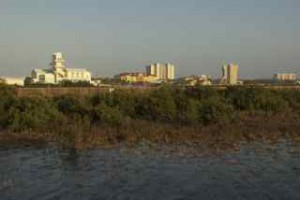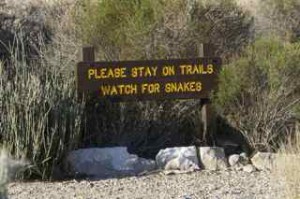
Now that spring has at least started to come to Iowa, I don’t feel QUITE as guilty sharing some of our fun and photos from a trip to Texas in March.
From whooping cranes to roadrunners to blooming cacti to intriguing geology – it’s a fascinating state with plenty to keep us bird and botany nerds occupied.

Friends from Florida – who are as nuts about nature and photography as we are – picked us up at the Houston airport for what was to be a delightful two weeks.
Whoopers were at the top of our must-see list – and we weren’t disappointed. We spotted several at Goose Island State Park south of Houston.
Later, at Aransas National Wildlife Refuge – world-famous wintering grounds for many of the 300-some whooping cranes left in the world – we took a half-day boat trip for even better views of several pairs of whoopers. What incredible birds!
We hop-scotched along the Gulf Coast, visiting several other National Wildlife Refuges, including Brazoria, Laguna Atascosa, and San Bernard. We did not see the ocelots that supposedly live there, but we did encounter harriers, chachalacas, white-tailed hawks, crested caracaras, and Texas’s largest live oak tree.

A highlight of Texas hospitality was the Alamo Inn B & B in Alamo, Texas, where host Keith Hackland provided birding maps and tips on birding hot-spots. Clean, reasonably priced, and located near a number of good birding areas. We’d recommend it. http://www.alamoinnsuites.com/index.htm
Keith directed us to several Texas State Parks and National Wildlife Refuges that maintain bird feeders, which entice otherwise elusive critters like green jays, Altamira orioles, and golden-fronted woodpeckers to put on a show for birders.


He also suggested a trip to Estero Llano Grande State Park, where we saw a common pauraque nesting on the ground. It’s a cousin to the whip-poor-will. A pond at Estero brought up-close looks at cinnamon teal, green-winged teal, shovelers, black-necked stilts, and other aquatic birds.

It was spring break for lots of college students, so – being young at heart – we just HAD to go to South Padre Island. We’d forgotten to pack the bikinis and beer, so settled instead for a hike on a wetland boardwalk. Turned out to be a great place to watch roseate spoonbills, snowy egrets, tricolored herons, widgeon, a clapper rail, black skimmers, among others.


When we finally headed west along the Rio Grande, we happened upon – wouldn’t you know? – two Iowans who spend the winter as volunteer bird guides. They showed us an Audubon’s oriole and a Couch’s kingbird, as well as our first real look at the Rio Grande – and Mexico.
At Langtry, we gave up bird-nerding long enough to visit the former hangout of the legendary Judge Roy Bean, who dispensed “law west of the Pecos.”

A mourning dove perched peacefully on the bullet-riddled metal chimney of his saloon, while cactus wrens patrolled the grounds.
At Big Bend National Park, we were struck by the contrast of the BIG country and the SMALL river. You could wade across the Rio Grande in many places – if you didn’t mind dealing with the Border Patrol.

After 4 days at Big Bend, we concluded that it would take 4 weeks to do the park justice. We added a host of southern birds to our life lists: Mexican jay, vermillion flycatcher, roadrunner, spotted towhee, common black-hawk, phainopepla, great kiskadee. We Iowans also marveled at the flowering plants: cacti galore, yucca, ocotlllo, mesquite, blue bonnets, desert marigolds, century plant.


Big Bend also means big sky – especially at night. We spent a couple of evenings at secluded overlooks, where the constellations and Milky Way seemed bright enough to reach out and touch. We even caught a glimpse of Comet Pan-STARRS.
And geology! Sana Elena Canyon, where the Rio Grande seems to cut through a 1,000-foot rock cliff, is breath-taking. And Big Bend is large enough to have its very own mountain range: The Chisos.
But even when you leave Big Bend National Park, you can’t leave the spectacular scenery behind. Highway 170 follows the Rio Grande west from Big Bend to Big Bend Ranch State Park. The road has been called one of the most scenic in the country – and we would not argue. The highway winds through canyons, beside the Rio Grande, and across the desert, with a new vista at seemingly every turn.

Even the 600-plus mile trek back east across the state proved far from boring. We pondered hundreds of wind turbines, occasional oil wells, scattered cattle on ranches, and miles of desert. But we tried not to ponder TOO slowly, lest we become a traffic hazard for Texans used to driving at or above the 80 miles per hour speed limit on several highways.
One last detour took us to the Attwater Prairie Chicken National Wildlife Refuge, where we heard the sad story of this endangered species. We weren’t lucky enough to see or hear the prairie chickens, but plenty of other birds – from black vultures to harriers to loggerhead shrikes – made the trip worthwhile.

Big. Diverse. Scenic. Dry. Hot.
That was our Texas experience.

Our return to Iowa?
The snow told us it was not quite spring.
But the turkey vultures beat us home, so we know it can’t be long!

